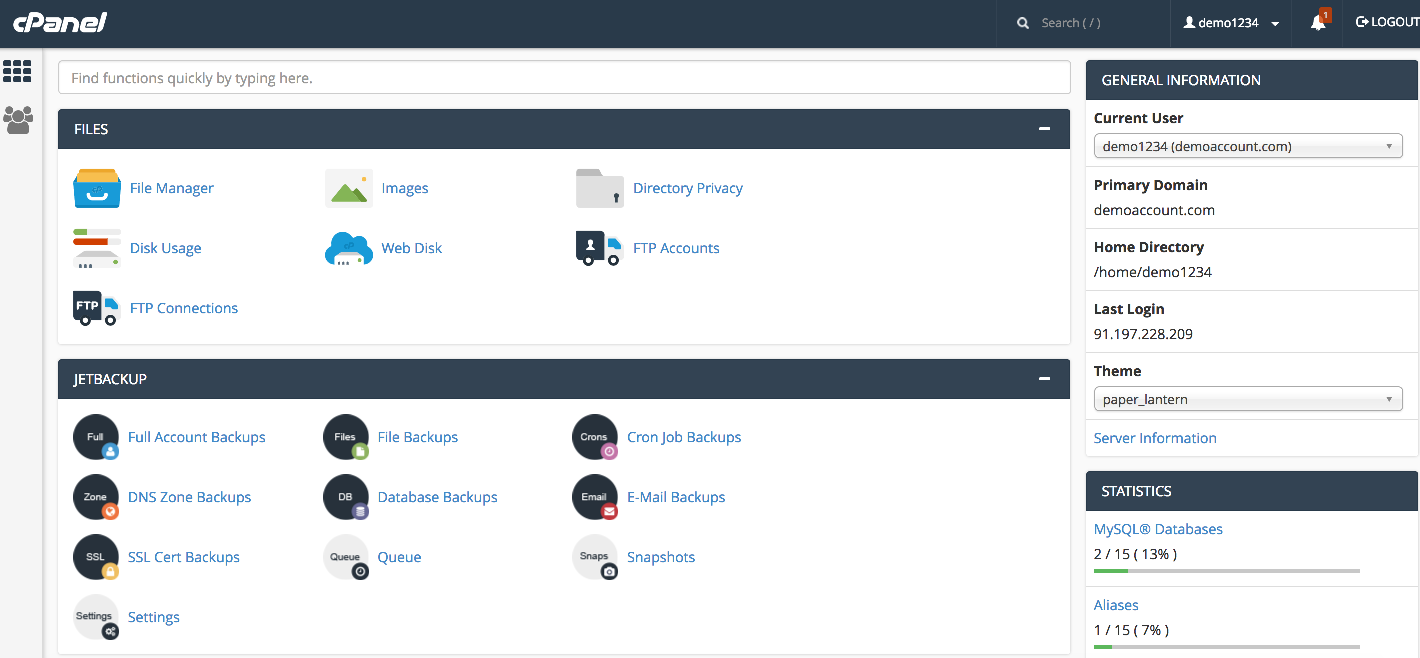

- #Cpanel log in how to
- #Cpanel log in password
You will still be able to click "Advanced" and then "Proceed Anyway" to log in. Please note that since SSL Certificates are not valid for IP addresses, this option will display a security error in most browsers. You can also log into WHM by replacing "101.0.1.256" with your IP.

In the email you would have been sent with your server details, you would also have the IP of your server.

For these examples, you'd need to replace "" with your domain or your server host name. Alternatively you can reach out to our support team to get these details resent, or log in through your Client Area instead. If you do not have these, we have a guide on finding these details here. Note: This section assumes you already have your WHM username and password.
#Cpanel log in how to
How To Log into WHM and Access cPanel for Reseller Hosting, VPS and Dedicated Servers How To Access cPanel through the Client AreaĪlternatively, you could also select the Gear icon in the above picture, then View Details, then the Login to CPanel option on the right hand side of the summary page.
#Cpanel log in password
Enter your cPanel username and password then click Log in. Step 3 - You will now see your cPanel login screen. Step 2 - Type the cPanel login link into your browser address bar, and tap Enter on your keyboard. For these examples, replace "" with your domain or with your server name: Note: This section assumes you already have your cPanel username and password. How To Access cPanel directly for Economy, Business and Stealth Hosting (Screen 8)Ĭlick 'Finish Setup Wizard' to complete the WHM configuration.Accessing your cPanel or Plesk account gives you access to a variety of tools to help manage your website and email hosting, and can be done in several ways.
Step 6 – Quotas: The recommended option is to enable file quotas, so check the option 'Use file system quotas'.(see Screen 8). Step 5 – Services: Unless you require specific services, the recommended option is to click 'Skip this step and use the default settings'(see Screen 7). Unless you are planning to use custom nameservers, you can leave all the options in this step as default and move on to step 5(see Screen 6). Step 4 – Nameservers: The default nameserver application is BIND, which is the recommended choice. You can add additional IPs to your server in this step if required. Step 3 – Setup IP Addresses: The main server IP address has already been setup within WHM/cPanel. The rest of the options can be left as default.(see Screen 4) (Screen 4) Step 2 – Setup Networking: To the right of 'Server contact Email address', enter your email address. Step 1 - Agreement: Read through the licence agreement and click 'I Agree/Go to Step 2'(see Screen 3) (Screen 3). If you make a mistake, don't worry, all options can be reconfigured within cPanel. The majority of users can just use the default pre-populated configuration. The first time you login to WHM/cPanel, you will need to complete the initial set up. The username is 'root' and the root password can be found via your Simply Cloud control panel.(see Screen 2). Once you have accepted the security warning, the next page will prompt you to enter a username and password. This is perfectly normal as the SSL certificate generated by cPanel is self-signed. To access WHM/cPanel on your server, you will need to use the following URL: (Replace IPADDRESS with the IP address of your server, you will find in the Simply Cloud control panel) You may be prompted with a security warning. This guide will walk you through setting up cPanel for the first time on any dedicated or virtual server with cPanel installed. Knowledgebase / Control Panels How do I log into cPanel?







 0 kommentar(er)
0 kommentar(er)
